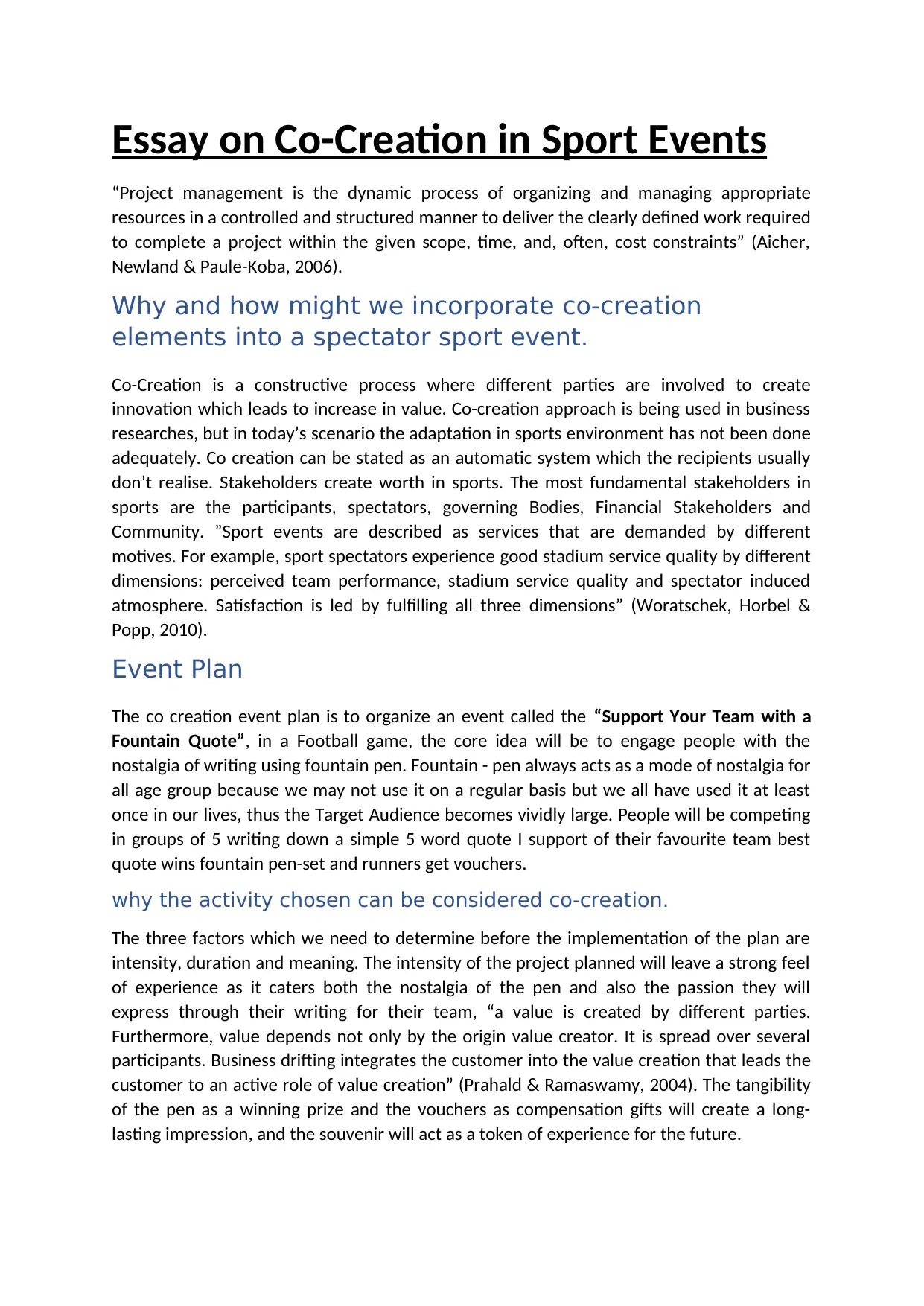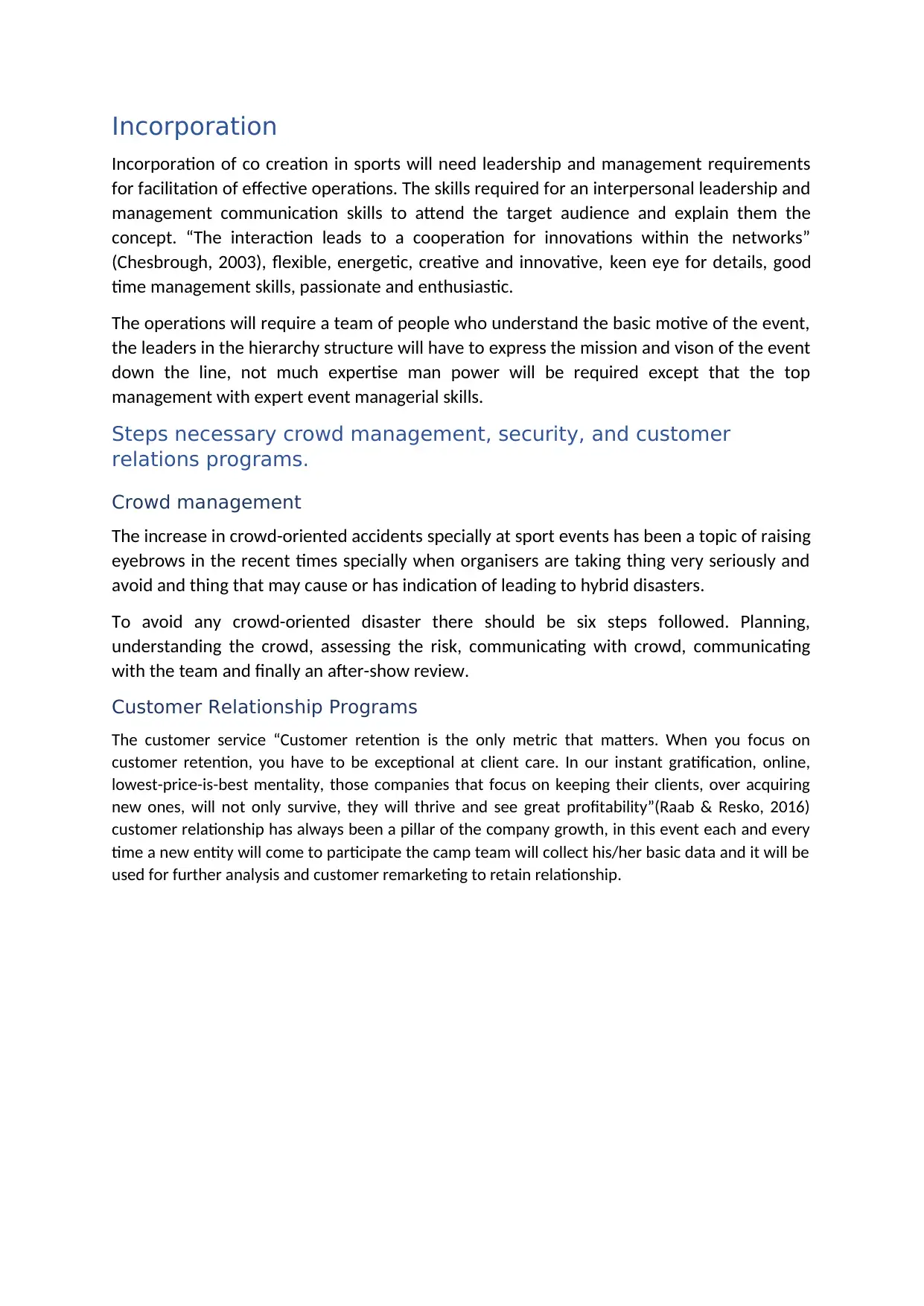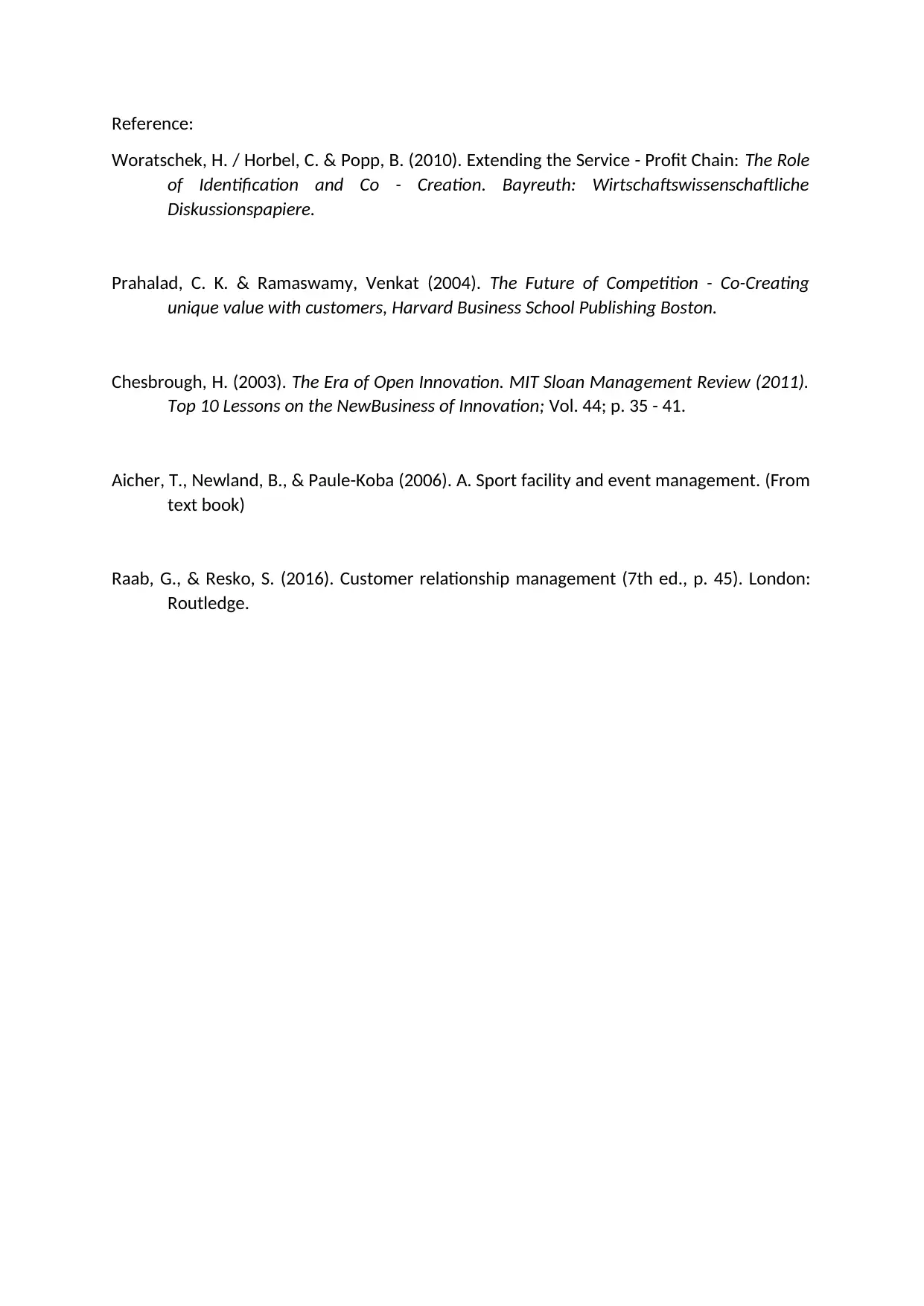Essay on Co-Creation in Sport Events: Strategies and Implementation
VerifiedAdded on 2023/04/10
|3
|863
|204
Essay
AI Summary
This essay delves into the concept of co-creation within the context of spectator sport events, emphasizing how involving stakeholders can enhance value and improve event experiences. It introduces a hypothetical event, "Support Your Team with a Fountain Quote," designed to engage fans and foster nostalgia through a writing activity. The essay outlines event planning considerations, including intensity, duration, and meaning, and highlights the importance of leadership, management, and effective communication for successful implementation. It also addresses crucial aspects of crowd management and customer relationship programs, emphasizing the need for proactive measures to ensure safety and build lasting connections with attendees. The essay draws on relevant academic literature to support its arguments and provides practical insights into incorporating co-creation elements into sports events to boost engagement and satisfaction.
1 out of 3




![[object Object]](/_next/static/media/star-bottom.7253800d.svg)